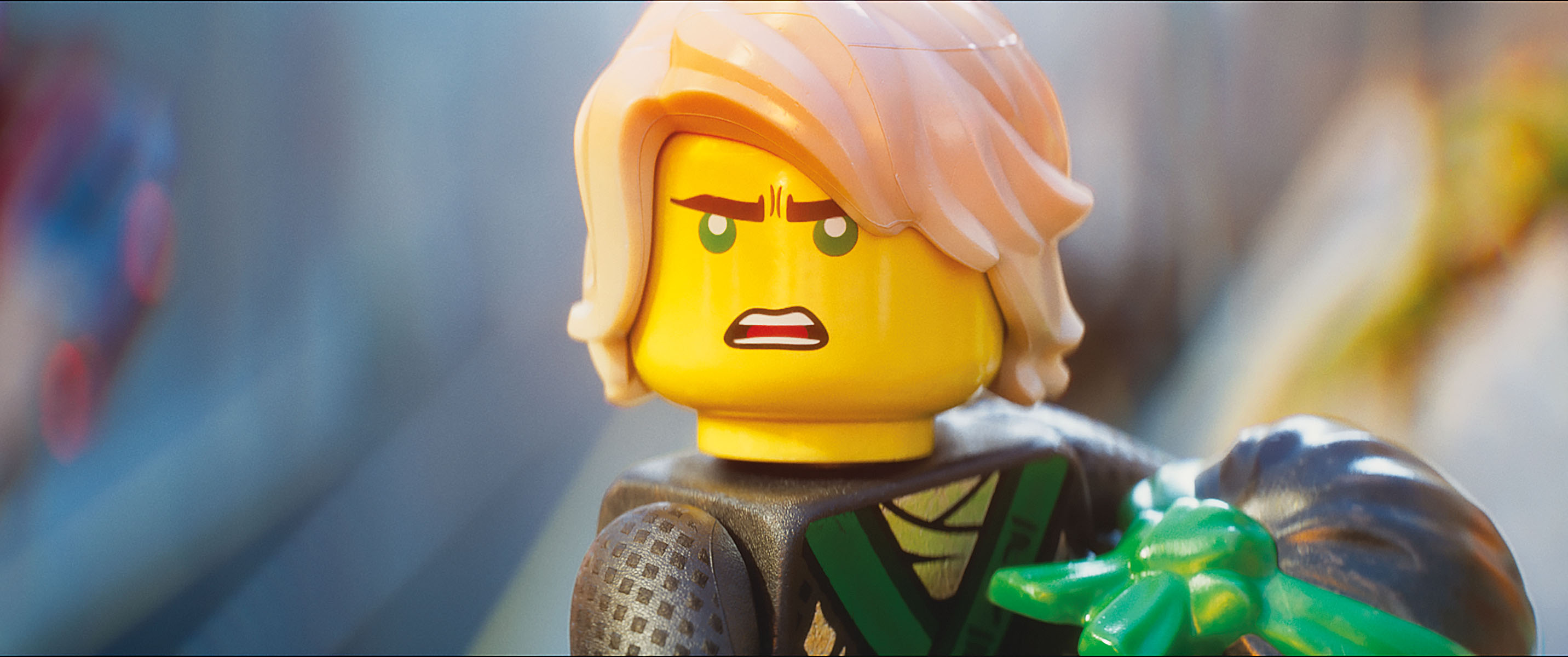By IAN FAILES
By IAN FAILES
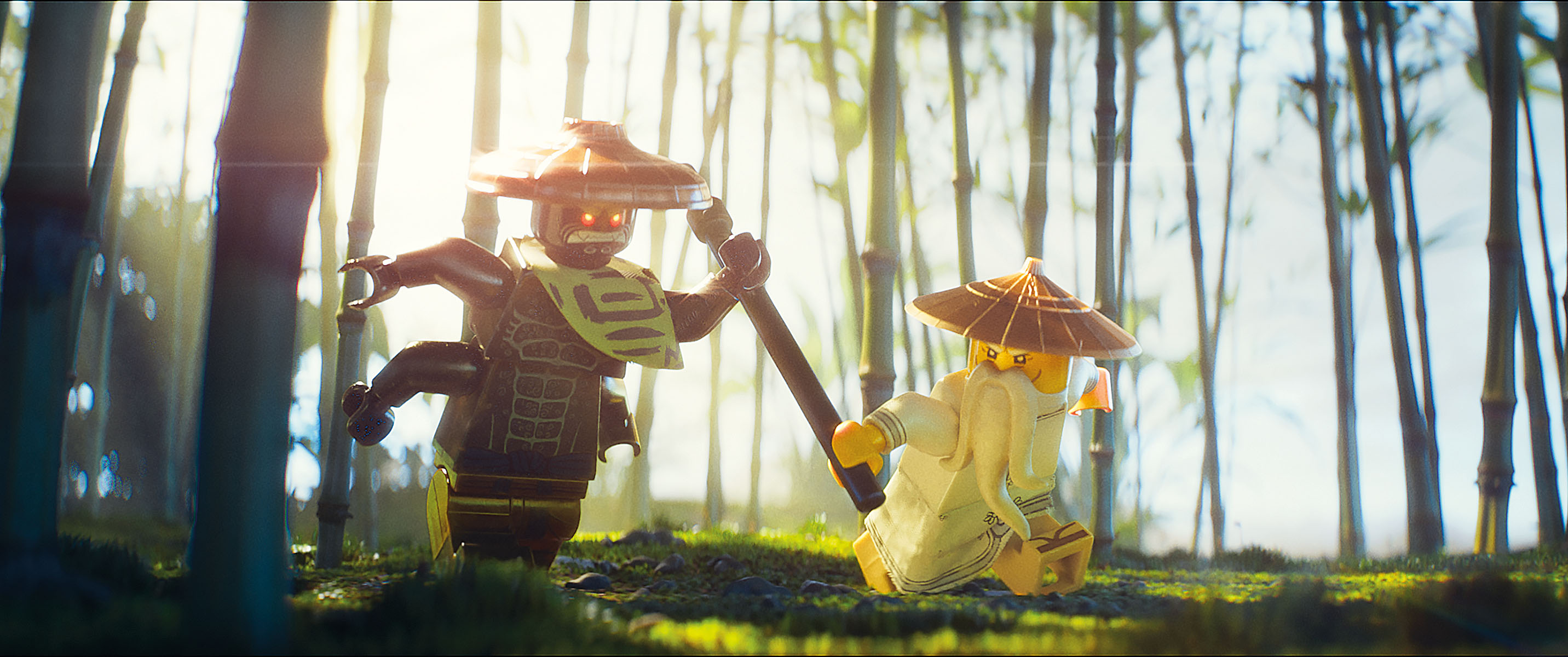
When Animal Logic first embarked on the computer-animated The LEGO Movie, released in 2014, it wasn’t clear how an entire world and its characters could be made in CG from the famous plastic bricks. But the studio invested heavily in a dedicated pipeline and new tools and techniques to pull it off, and then took things even further for 2017’s The LEGO Batman Movie.
Now with The LEGO Ninjago Movie, inspired by the line of martial arts toys from LEGO, Animal Logic has had to once again re-think its approach to animating bricks and take on several fresh challenges, including animating kung fu action, rendering natural environments and even – spoiler alert – crafting a photorealistic cat.
NINJA STYLE, IN LEGO FORM
Early on in production, LEGO Ninjago director Charlie Bean tasked Animal Logic with imbuing this new adventure with a partic- ular style that combined the genres of kung fu, monster movies and the films of director John Hughes.
On top of that, LEGO Ninjago had to feel – just as in the previous films – like it was made by hand and with astop-motion feel remi- niscent of ‘brick films’. Animal Logic had established that look and feel in its approach to animation, for example, by not rendering motion blur on the minifigures (minifigs) and by adhering to a number of clear rules; most importantly, that almost everything was made from ‘legal’ LEGO bricks.
Indeed, Animal Logic’s pipeline for these LEGO films is built entirely around the brick. It begins with the use of LEGO Digital Designer (LDD), a product anyone can use to construct LEGO forms from legal LEGO bricks. These are then brought into Autodesk’s Maya for further modeling and surfacing. Rigging, animation and layout are done in Softimage XSI, and effects made possible in Side Effects Software’s Houdini. Shading and rendering is handled in Animal Logic’s proprietary path tracer Glimpse, developed during the original LEGO Movie. Compositing is done in The Foundry’s NUKE.
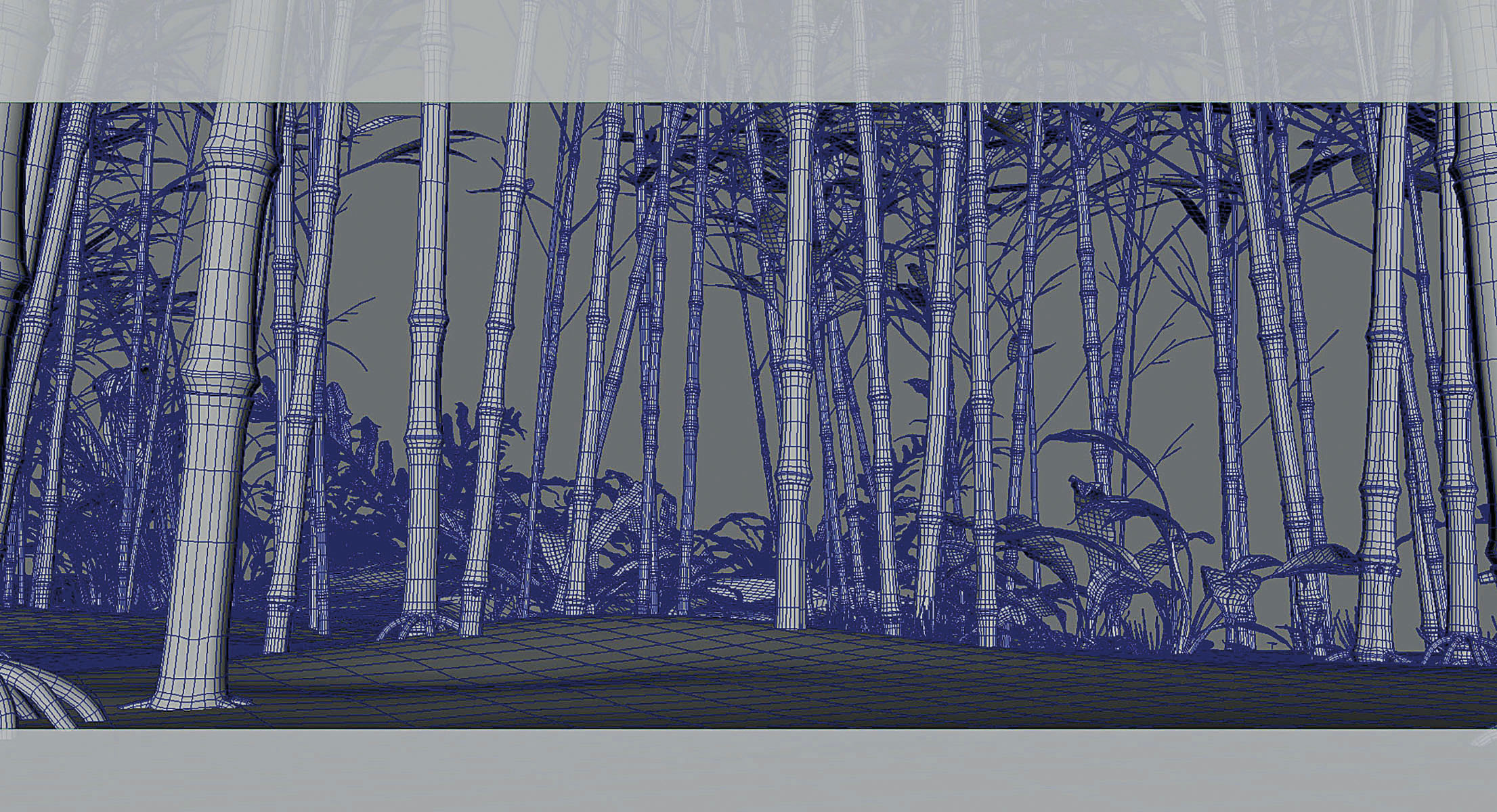
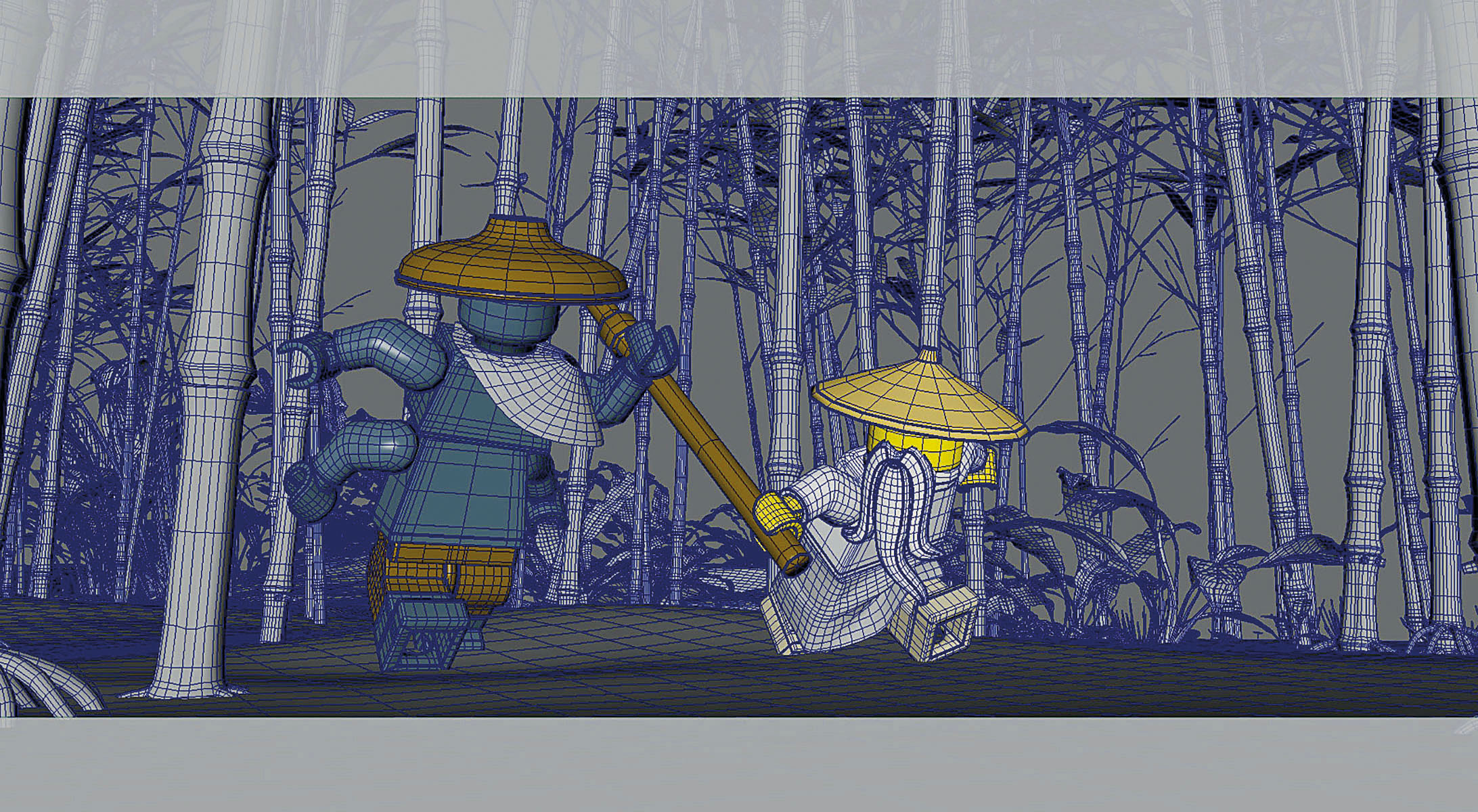
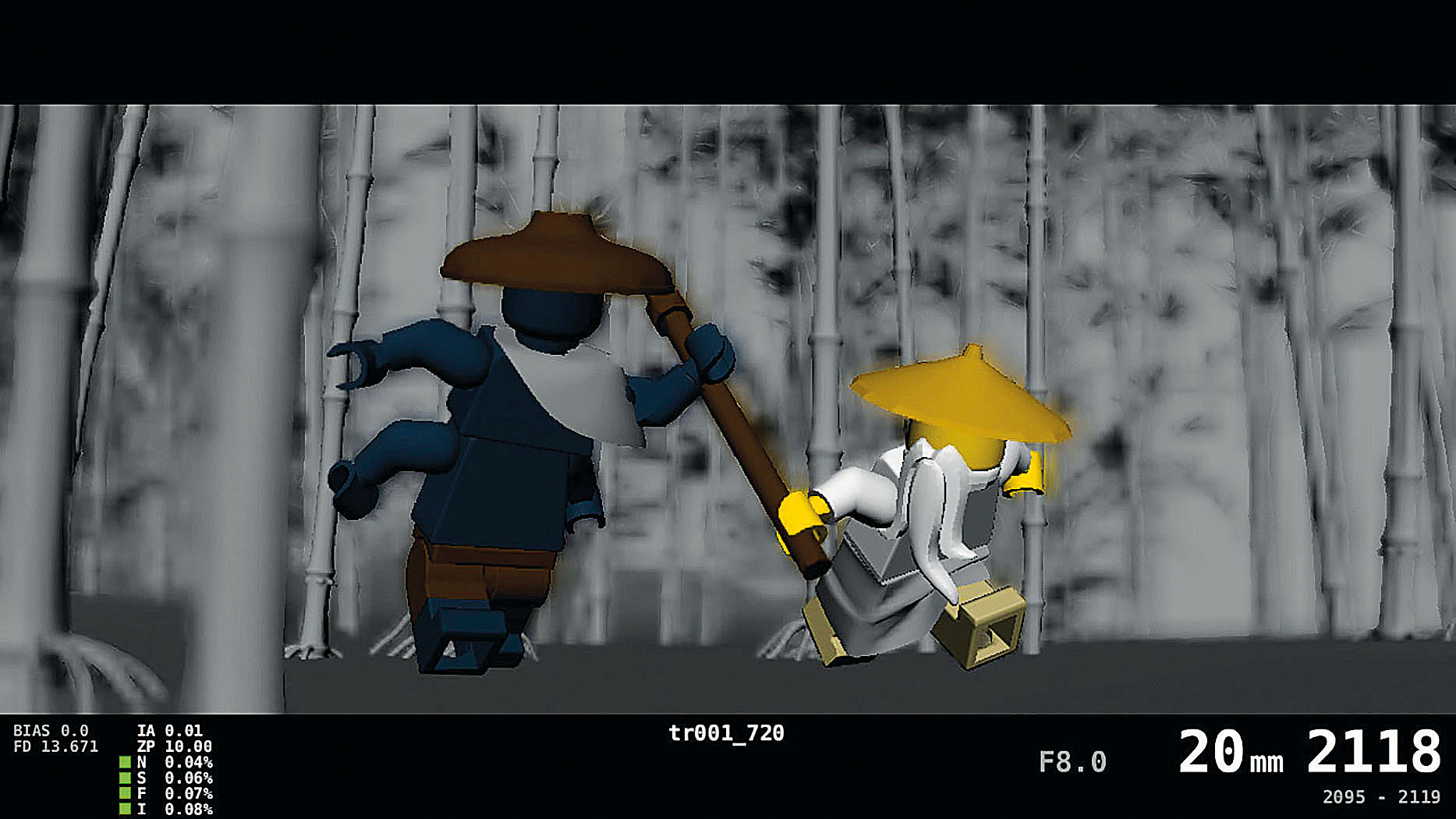
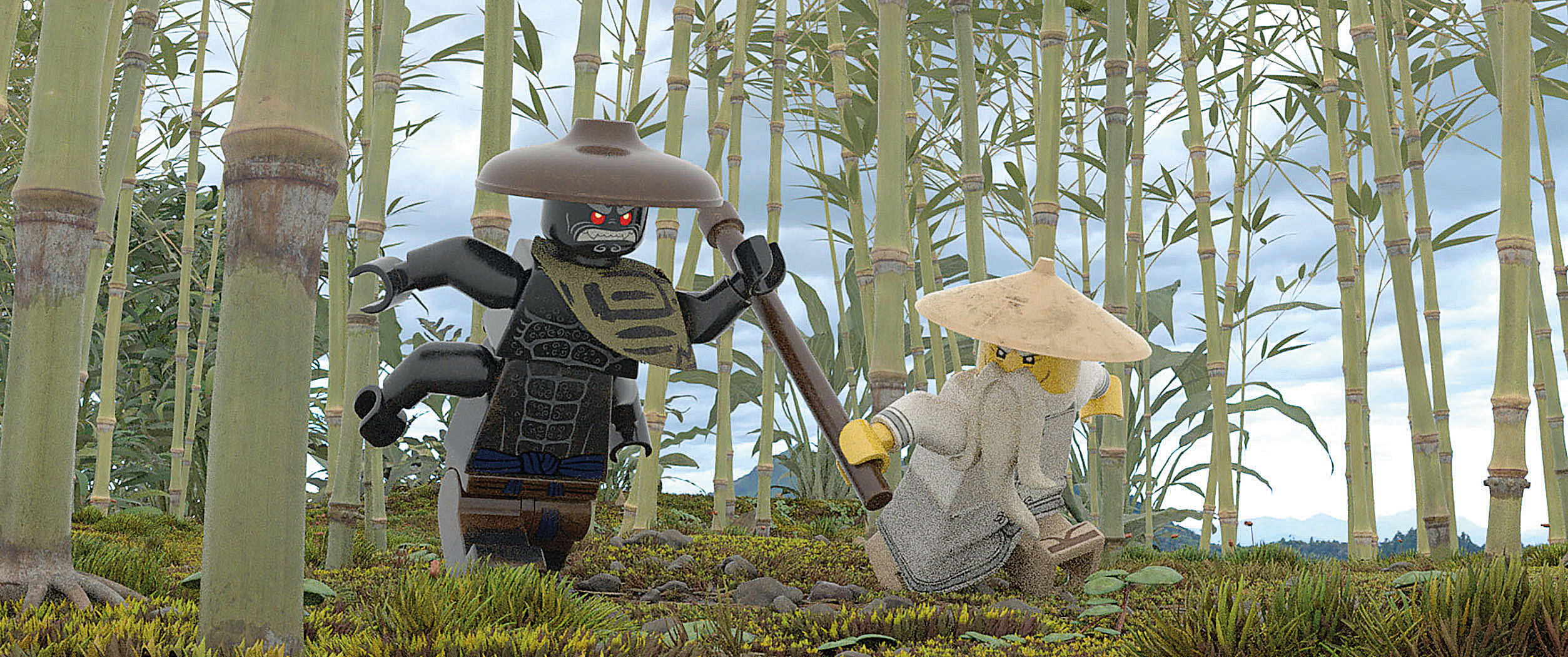
“That was the director’s dream and goal from the beginning. The film had to feel akin to a child playing in the backyard at a macro level with their little LEGO pieces. We aimed at everything being miniaturized.”
—Greg Jowle, CG Supervisor
NEW LOCATIONS, NEW APPROACHES
Many elements of LEGO Ninjago still made use of this brick pipeline – from the film’s buildings and city to the Mechs within, which the main characters battle. But the film also introduced a natural environment full of vegetation, water, sand, rocks and soil that Animal Logic would have to create in CG, albeit at the same scale as a minifig.
“That was the director’s dream and goal from the beginning,” notes CG Supervisor Greg Jowle. “The film had to feel akin to a child playing in the backyard at a macro level with their little LEGO pieces. We aimed at everything being miniaturized.”
This included vegetation, re-created to appear as if from the real world, but at LEGO minifig scale. “An obvious place to start became bonsai trees,” says Jowle. “We went to a bonsai place and did reference shoots. We looked at moss for different grasses. We also mixed in common house plants to remind people of the scale that we were in. We’d throw in plants where the leaves were smaller than our hands, but for the minifigures they were bigger than their entire body.”
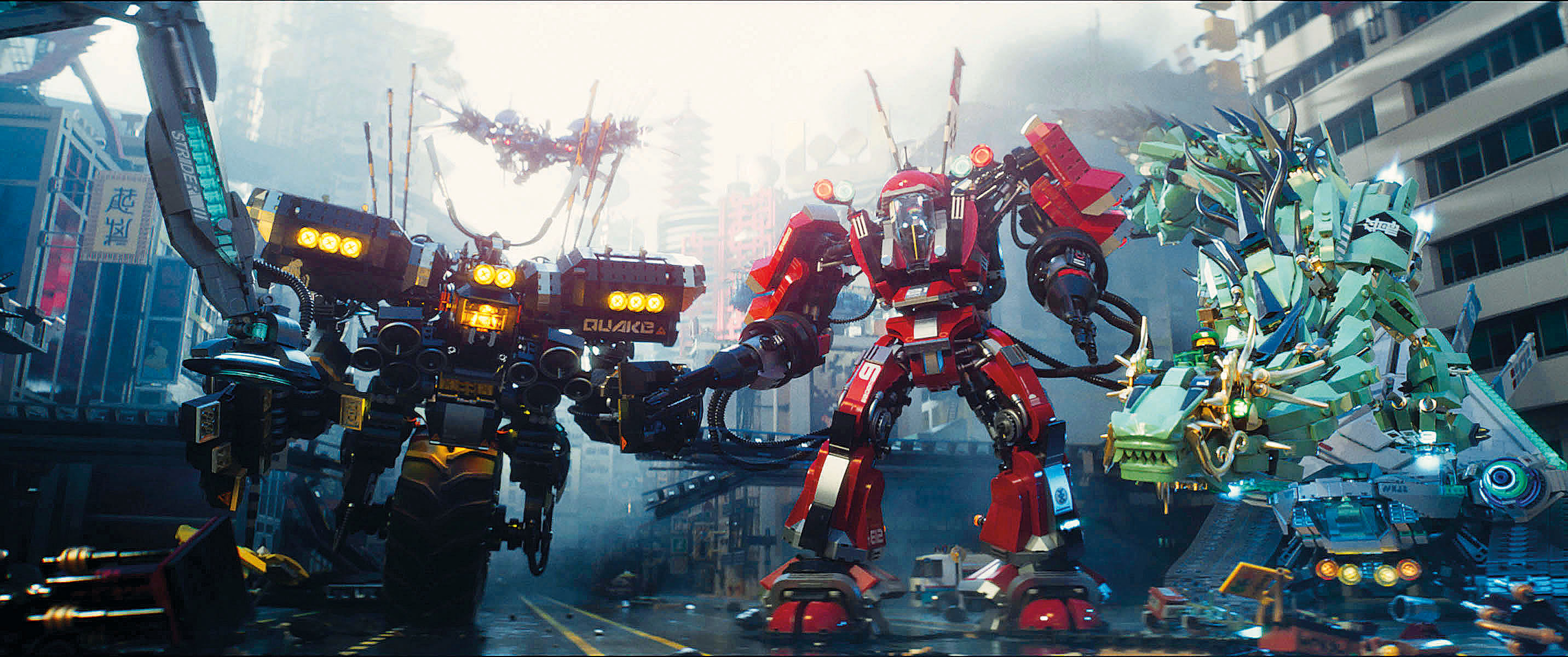
REAL-WORLD EFFECTS
In previous LEGO film outings, effects simulations had been replicated at a brick level. For Ninjago, there was more scope to simulate phenomena such as water, sand, explosions and smoke as real-world effects. However, it was still at a minifig scale and sometimes with a certain LEGO style.
“There’s a scene in the film where the characters pop out of water,” notes FX Supervisor Miles Green. “In reality, often water just sheets off LEGO pieces and they look completely dry. But we wanted to show they were wet so we would stick a little spritz of water on them.”
Simulating water, which was done in Houdini, also proved complicated because animation of the characters had a stop-motion style (mostly done on 2s). Water sims did not work well this way.
“We had to work quite closely with animation to try and get objects that aren’t in the water on 2s, but objects in water ideally need to be smooth and flowing without velocity changes,” explains Green. “Otherwise things start exploding and changing. If they have to be on 2s, then we have to do a bit of re-timing and interpolation and then work backwards to make it look smooth.”
Effects artists also, of course, had to take note of scale. Says Green: “When you’re doing that for a small LEGO asset, it makes that asset feel huge, and we want it to look tiny. Everything needs to run a lot faster than you’re used to seeing it. So the drips have to almost drop away in a couple of frames.”
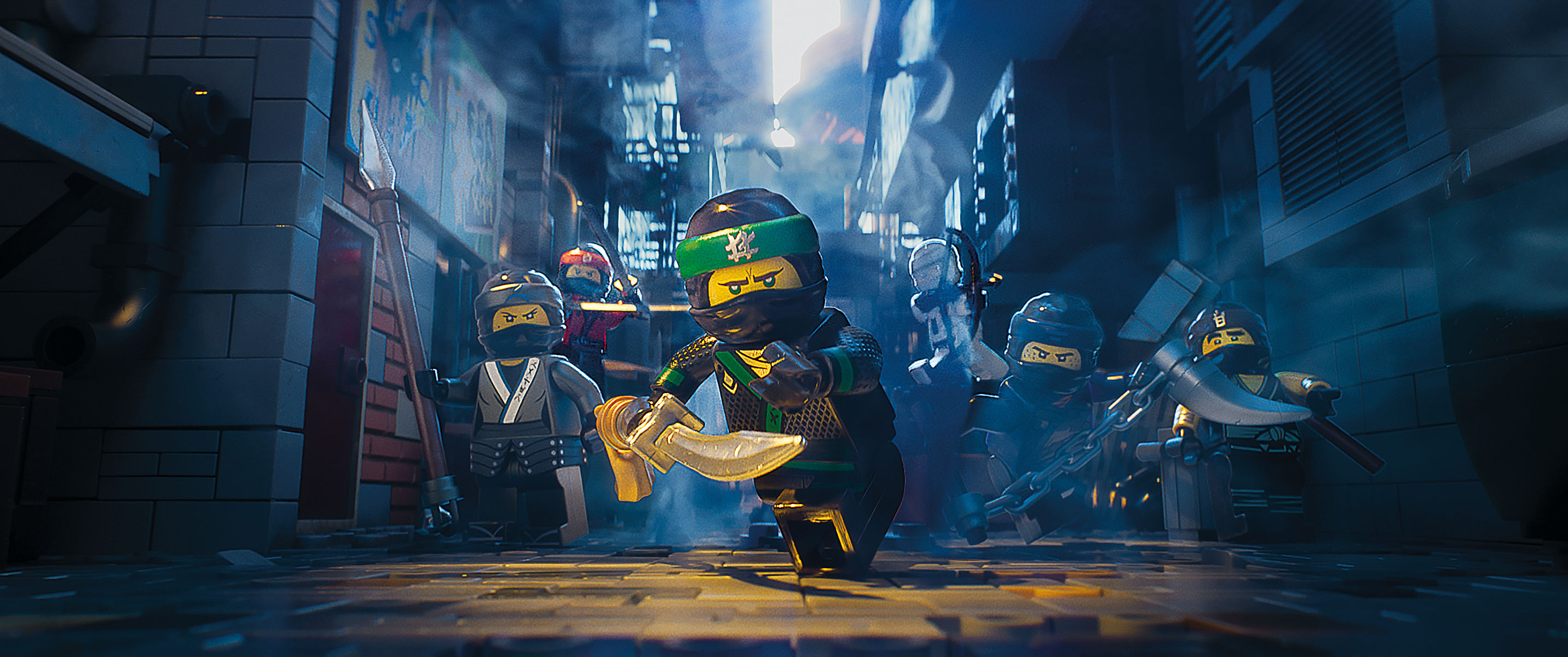
NINJAGO-ANIM
Inspired by traditional kung fu movies – and with Jackie Chan featured as one of the main characters – Animal Logic was faced with the challenge of inputting martial arts action into the minifigs.
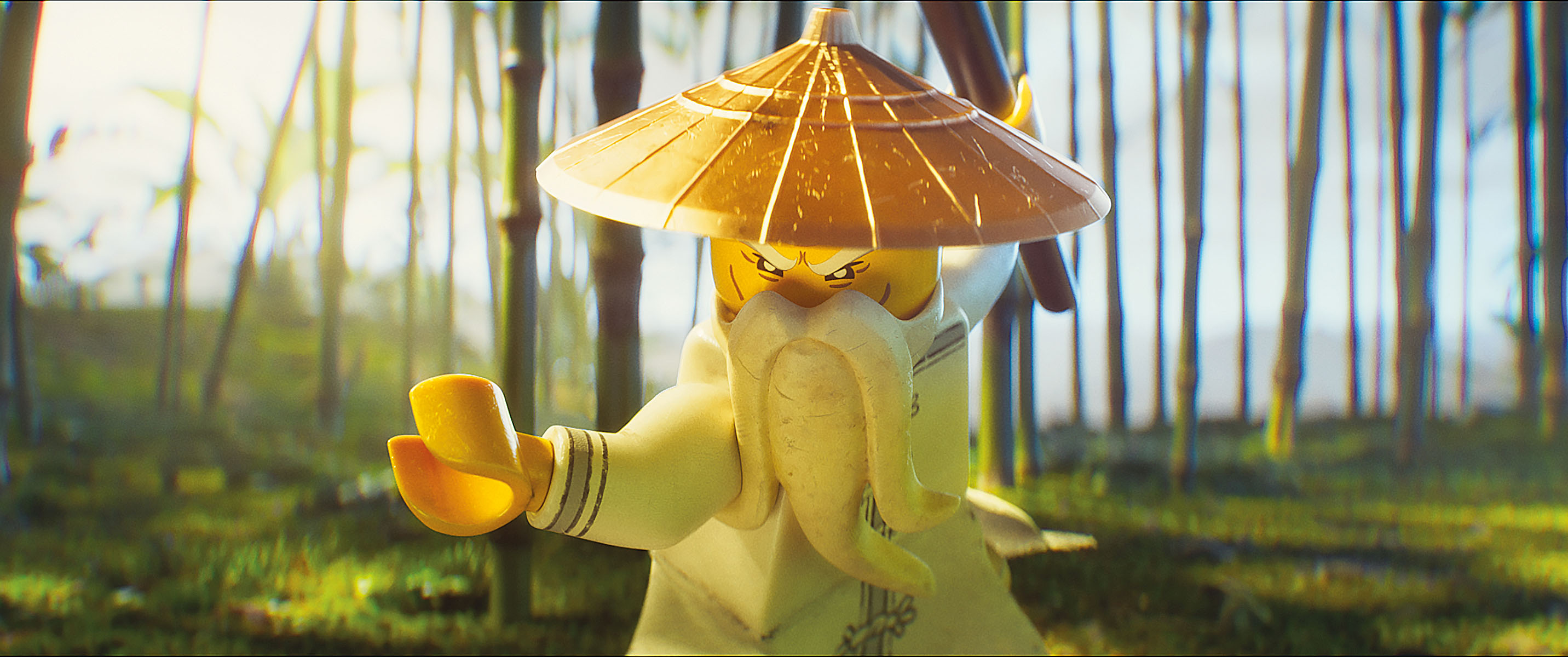
“We’d watch the way Jackie Chan is in the middle of afight, has an idea, looks at an object, looks at an opponent, looks back at the object and then figures out how to use the object,” says Animation Director Matt Everitt. “And then we’d apply that to our scenes.”
The fights also saw the use of ‘brick blur’, something Animal Logic had done even on the first LEGO Movie. This is where instead of motion blur, animators would add in additional legal brick pieces to exaggerate a move or replicate what a ‘smear’ frame may have achieved.
“When you watch it on the run you get this beautiful fluid movement, but when you frame-by-frame it, each frame is individually hand-crafted,” states Everitt. “You can’t really bend the elbows of a minifig, say, but we can make the ‘feeling’ of a bent elbow when you watch it on the run. I like to think you could stop the movie at any point and you would find a treat in there.”
Animal Logic’s animators were also faced with the challenge of animating the Mechs, the robot warriors operated by the film’s heroes and villains. Although the Mechs engage in epic battle action, they also had to operate within the realm of this miniature world.
“When you pop out to a wide shot of a high angle looking down at them, you’re reminded, oh it’s actually a miniature, a toy,” says Everitt. “But when you’re down looking up at the Mechs, it’s like, oh we’re in Pacific Rim! So there’s this constant playing with the audience’s expectations of what they’re seeing on screen and reminding them that it is a toy, it’s not real.”
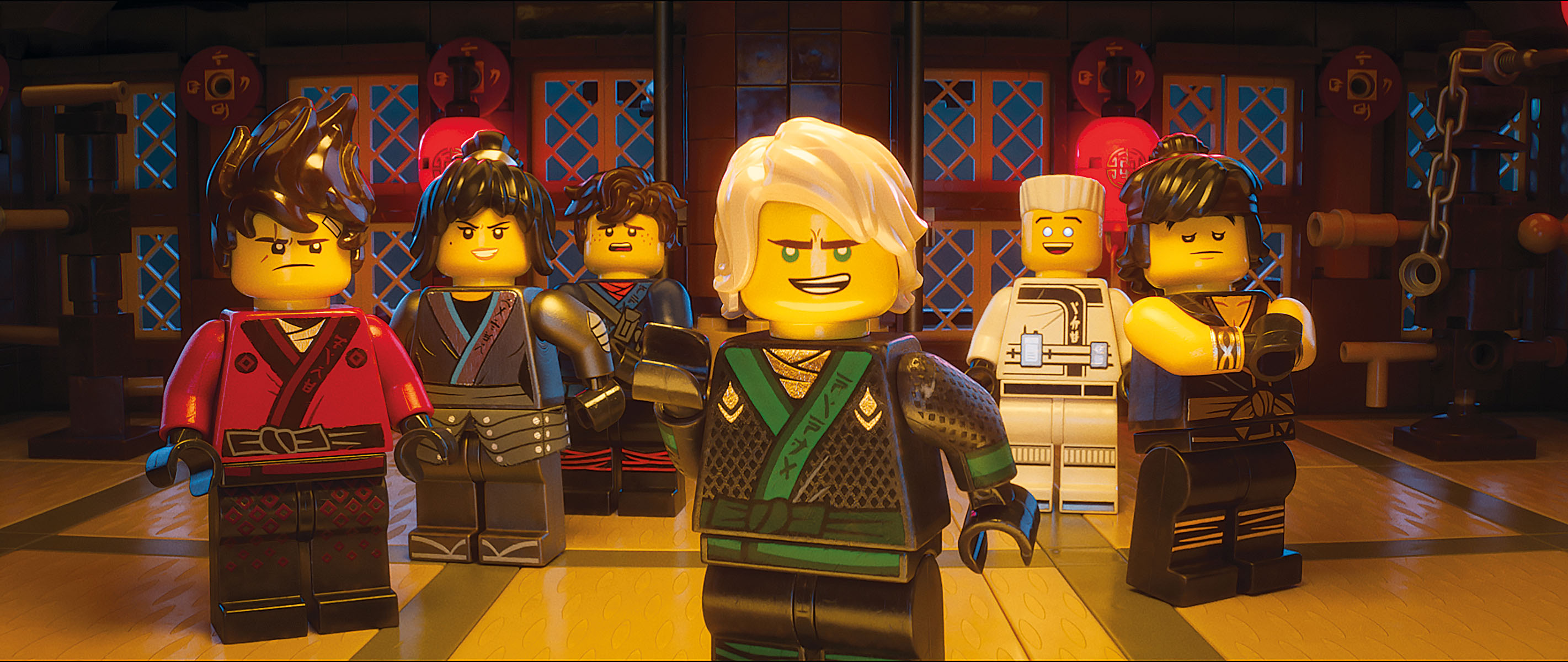
GROWING THE WORLD OF LEGO NINJAGO
Two new tools built by Animal Logic specifically for The LEGO Ninjago Movie aided in filling out the world with natural vegetation. The first of these, dubbed ‘Spawn’, was a scattering tool that allowed artists to “lay a field or carpet of moss as grass and vary it or add leaf debris,” describes CG Supervisor Greg Jowle. “You don’t want to do that by hand.”
The second purpose-built tool was called ‘Spruce’ and was designed to grow multiple versions of randomized bushes, trees and other plants. “We break them down into compo- nent pieces called elements,” says Jowle, “and then like any L-system you can put them back together, scatter leaves on the ends, de-intersect the leaves, and put ‘keep alive’ on them to give them this gentle constant movement.”
“We’d watch the way Jackie Chan is in the middle of a fight, has an idea, looks at an object, looks at an opponent, looks back at the object and then figures out how to use the object. And then we’d apply that to our scenes.”
—Matt Everitt, Animation Director
KITTY SURPRISE
The big twist in LEGO Ninjago is the arrival of a cat into the world, playing into the idea that this is all occurring within a suburban backyard. It quickly becomes a menace to the film’s heroes, knocking over buildings and causing mayhem while remaining largely impenetrable.
Since ‘Meothra’ – as it became known –was intended to be a live-action house cat, Animal Logic did several tests with real cats against bluescreen. However, it soon proved difficult to make the animals perform as required. That led to a fully CG feline being crafted for the film.
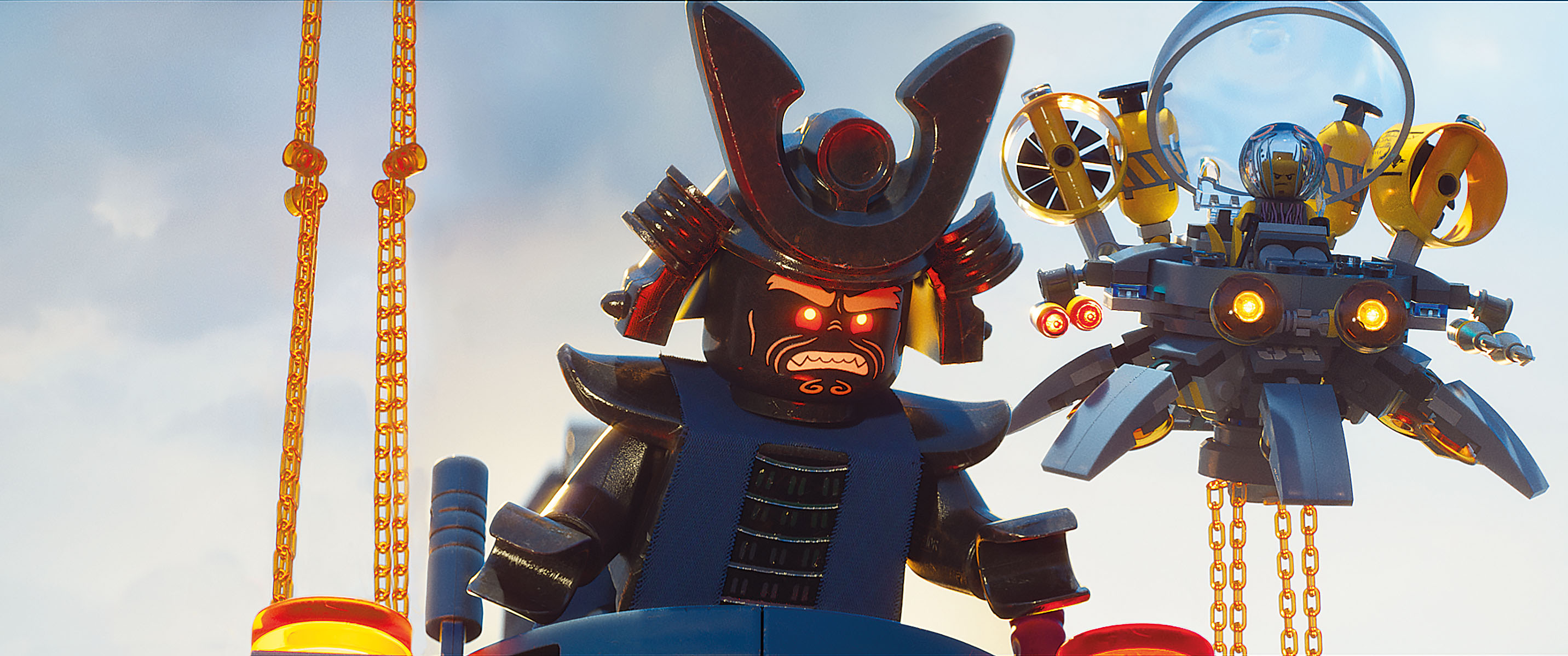
Animal Logic drew upon previous creature work it had done, including onw furry animals, to build Meothra. In terms of anima- tion, the cat had to represent the movie’s monster, but at the same time not be malicious. “It’s just a cat doing cat stuff,” says Everitt. “We also recorded a couple of cats and I would manipulate a Mech like a bad guy with the cat. The cat would give it a sniff and knock it over and burrow around within the LEGO and explore within it, and so we used some of that as explicit reference in the film.
“We spent a bit of time on YouTube researching videos of cats, working out what makes it so appealing,” Everitt explains. “People just love watching cats doing silly stuff.”
And thanks to Animal Logic, that silly stuff is now immortalized in a LEGO film.
SHOOTING FOR REFERENCE
The evil warlord Garmadon commands an army of ‘shark Mechs’ in the film who fire little fish brick missiles as their weapons. Looking to ground the look of these missiles in reality when simulating the effects of them being fired, but at the appropriate small scale, Animal Logic discovered the world of home-made match rockets.
“People make and post these match rocket videos on YouTube,” outlines FX Supervisor Miles Green. “Basically you get a match and some tin foil and you put the tin foil over the head of the match and wrap it around. And when it’s lit, they whiz off. We used them for missile trails. As they go they leave these beautiful fine trails – very small and diffuse.”
